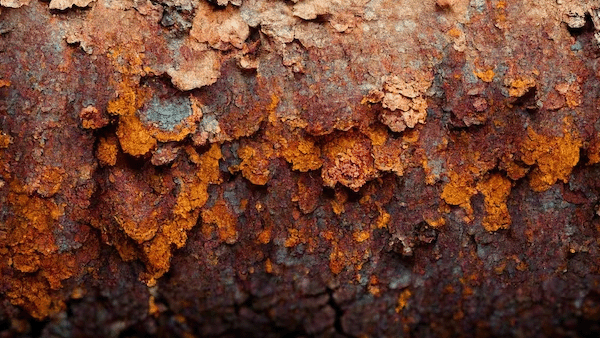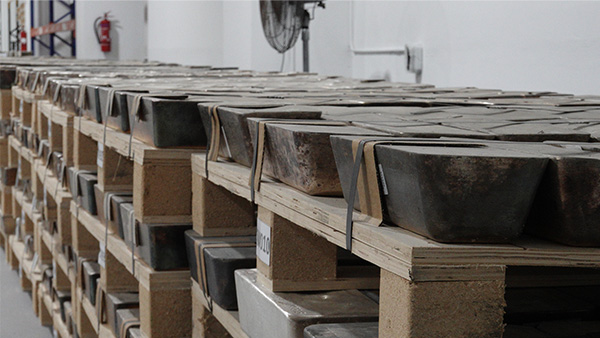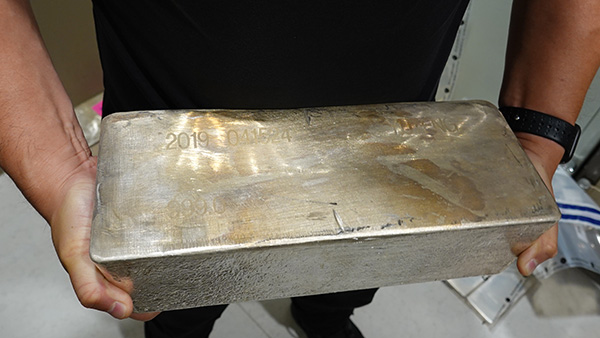Does Silver Rust?
Silver is a precious metal often used to make jewelry and various decorative items. The metal, renowned for its malleability, conductivity, and, notably, its resistance to corrosion, has proven to be a symbol of affluence and a material of immense utility. However, over time, silver can develop a dark layer called tarnish, which is commonly mistaken for rust. But does it rust? In this article, we will answer and explain this question.

What is Rust?
Rust, scientifically known as iron oxide, is a reddish-brown compound that forms when iron or its alloys, such as steel, undergo a chemical reaction in the presence of oxygen and moisture. This process, known as rusting or corrosion, begins with the oxidation of iron, where the iron atoms lose electrons and become positively charged iron ions.
The interaction of water (or moisture in the air) and oxygen with the iron facilitates this oxidation process. Over time, the iron ions react with oxygen ions in the environment, forming iron oxide. The continuous exposure to oxygen and moisture accelerates this process, causing the iron oxide to accumulate, which we visually perceive as rust.
Rust is not merely a cosmetic issue; it poses detrimental effects on the structural integrity of the affected metal. As rust forms, it expands, causing the metal to flake, crack, and eventually disintegrate, compromising its strength and durability. This degradation can be particularly problematic in structures, tools, and machinery where the reliability of the metal is paramount.
Consequently, rust prevention and management are crucial in industries and applications where iron and its alloys are exposed to moisture-laden environments, ensuring the longevity and functionality of the materials and structures.
Does Silver Rust?
The unequivocal answer is no. Pure silver, like pure gold and platinum, does not rust or corrode. For any form of rust to develop, the material must be alloyed with iron.
The resistance of silver to rust and significant corrosion has been a pivotal factor in its historical and continued use as a form of money and a store of value. Unlike metals that are prone to rust, such as iron, silver maintains its weight and does not degrade significantly over time, preserving its intrinsic value. This durability ensures that silver coins, bars, and other forms of currency retain their specified weight and purity, even after extensive circulation, handling, and exposure to various environmental conditions.
Moreover, silver's resistance to rust and corrosion enhances its trustworthiness as a medium of exchange and a measure of wealth. Throughout history, civilizations have recognized the enduring nature of silver, adopting it as a stable and reliable form of currency that could withstand the test of time and usage. The tangible and unchanging nature of silver, contrasted with the perishability of goods and commodities, provided a consistent and universally accepted standard of value, facilitating trade and economic development across regions and cultures.

If Silver Does Not Rust, Why Does It Turn Black?
Unlike ferrous metals like iron, which actually rust, silver does not undergo the same chemical reaction and is resistant to corrosion. Instead, silver tarnish is caused by a chemical process in which silver reacts with sulfur compounds when exposed to air, forming a layer of silver sulfide on the silver surface, that inhibits further oxidation of the underlying silver. This tarnish layer gives the appearance of rust but is not the same. The tarnish generally does not damage the silver beneath the surface layer, yet it dulls the silver bar's radiant gleam and imparts a dark shade.
Silver will tarnish when it reacts with sulfur-containing substances in the environment. The presence of air pollution, household chemicals, and certain body products like lotions or washes can accelerate this tarnishing process. Therefore, it is important to understand how to properly care for silver items to avoid the formation of tarnish and how to clean silver when tarnished.
Does Sterling Silver Tarnishes Differently From Fine Silver?
The primary difference between sterling silver and silver lies in their composition and applications.
Silver, also known as fine silver, is a precious metal that is slightly softer and is often identified by its purity, which is 99.9%, denoted as 999. This high level of purity allows it to retain a higher luster but also makes it more susceptible to scratches, dings, and malleability.
On the other hand, Sterling Silver is an alloy, meaning it is a mixture of metals. It contains 92.5% pure silver and 7.5% of another metal, usually copper, although other metals like zinc or nickel can also be used. This is often denoted as 925.
The addition of another metal into the silver increases its hardness, making it more durable and resistant to damage and wear, which is particularly useful for items that need to withstand regular use, like jewelry, silverware, and musical instruments. However, sterling silver tends to tarnish more easily than pure silver due to the other metals in the alloy, especially when exposed to harsh environments or certain chemicals.

Should Tarnished Silver Coins and Bars Be Cleaned?
Before we get into how to clean tarnished silver bars, let's answer the question of whether tarnished investment-grade silver bars should be cleaned. In our opinion, there is no need to clean the tarnish off investment-grade silver coins and bars.
What is most important for investment-grade silver bars is their weight and purity (a.k.a. fineness). Since precious metals like silver do not corrode or rust, the intrinsic value of tarnished silver bars is never affected. A 10 troy ounce Royal Canadian Mint silver bar or a 1,000 troy ounce LBMA Good Delivery silver bar will not lose its value just because it is tarnished, even to the point of becoming black.
At Silver Bullion, we welcome customers to sellback their bullion to us, even if they are tarnished. From our perspective, it is the weight and fineness of an investment-grade silver bar that matters.
Can You Stop Silver From Tarnishing?
Pure silver, by virtue of its chemical characteristics, is naturally susceptible to tarnishing, and fully inhibiting this innate process is essentially unattainable. Whether it be silver artifacts, silver tableware, silver bullion, or sterling silver jewelry, tarnishing will occur when silver interacts with sulfur-bearing elements in its surroundings.
Simply touching silver with uncovered hands can introduce oils and salts that might accelerate tarnishing. Additionally, the detailed patterns and engravings, frequently found in silver items, can establish recesses where tarnish may develop, further complicating prevention efforts.
Although it's impossible to avert tarnishing completely, there is no necessity to regularly clean your silver pieces, particularly if they are investment-grade silver bars, as their value is anchored in the weight and purity of the silver bar. At most, your valuable silver bars may benefit from gentle polishing and an infrequent bath in a baking soda solution, followed by drying with a soft microfiber cloth.
